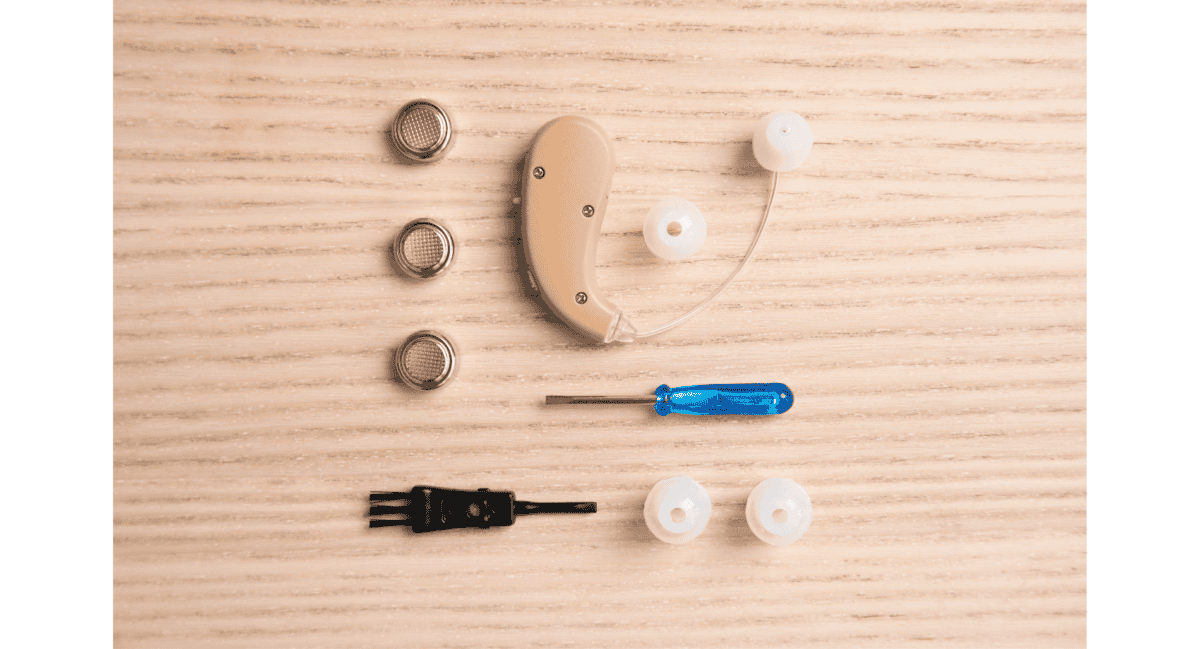Hearing aids are valuable devices that significantly enhance the quality of life for individuals with hearing loss. These small yet mighty instruments work tirelessly to amplify sounds and improve communication.
But like any sophisticated technology, they may encounter issues that require repair and maintenance.
Common Hearing Aid Issues
Hearing aids are intricate devices made from delicate components that can experience a range of malfunctions over time. Some of the most common hearing aid issues include:
- Sound Distortion: Distorted or muffled sound output can indicate issues with the microphone, receiver, or internal wiring of the hearing aid.
- Intermittent Connectivity: Connectivity problems, such as frequent cutting out or static noises, may stem from issues with the battery, wiring, or wireless components.
- Feedback or Whistling: Feedback noise or whistling sounds often occur due to improper fit, earwax buildup, or malfunctions in the amplifier.
- Water Damage: Exposure to moisture or humidity can damage the internal components of the hearing aid, leading to malfunction or complete failure.
- Physical Damage: Accidental drops, impacts, or mishandling can result in visible damage to the casing, buttons, or controls of the hearing aid.
Identifying the specific issue affecting your hearing aid is the first step towards resolving the problem and restoring optimal performance.
Troubleshooting Tips for Hearing Aid Repairs
Before seeking professional repair services, there are several troubleshooting steps you can take to address minor issues with your hearing aids:
- Check the Battery: Ensure the battery is inserted correctly and fully charged. Consider replacing the battery if you suspect it may be depleted.
- Clean the Hearing Aid: Remove earwax or debris from the microphone and receiver using a soft, dry cloth or a specialized cleaning tool from your hearing health specialist.
- Inspect the Tubing: If your hearing aid has tubing or vents, examine them for blockages or damage that may be affecting sound quality.
- Adjust the Volume: Experiment with adjusting the volume and settings on your hearing aid to determine if the issue is in the configuration.
- Perform a Hard Reset: Some hearing aids can be reset to factory settings by following specific instructions provided by the manufacturer.
By following these troubleshooting tips, you may be able to resolve minor issues and restore functionality to your hearing aid without the need for professional intervention.
The Importance of Timely Hearing Aid Repairs
Promptly addressing issues with your hearing aids is important for maintaining your auditory health and overall well-being. Delaying repairs or neglecting to address problems can lead to a range of consequences, including:
- Reduced Hearing Clarity: Ignoring distorted sound quality or connectivity issues can diminish the effectiveness of your hearing aids, impacting your ability to communicate and engage with your surroundings.
- Increased Listening Strain: Struggling to hear due to malfunctioning hearing aids can result in increased cognitive strain, fatigue, and social isolation, affecting your mental and emotional health.
- Risk of Further Damage: Neglected repairs may exacerbate existing issues, leading to more extensive damage and potentially requiring costlier repairs or replacements in the future.
Seeking Professional Hearing Aid Repair Services
When troubleshooting efforts prove unsuccessful or if you encounter more complex issues with your hearing aids, it’s advisable to seek the expertise of a professional hearing healthcare provider. We will diagnose, repair, and maintain hearing aids, and we offer the following services:
- Diagnostic Testing: Comprehensive testing to identify the specific issue affecting your hearing aid and determine the appropriate course of action.
- Component Replacement: Replacing damaged or malfunctioning components, such as microphones, receivers, tubing, or batteries, to restore optimal functionality.
- Cleaning and Maintenance: Thorough cleaning, maintenance, and adjustment of your hearing aids to ensure they perform at their best.
- Programming and Calibration: Revising settings, adjusting programming, and calibrating your hearing aids to match your hearing needs and preferences.
We address a wide range of hearing aid issues for most hearing aid models, and we provide personalized solutions tailored to your unique hearing requirements.
Restoring Clarity and Comfort
Hearing aid repairs can boost the functionality and performance of your hearing aids. With the right maintenance and support, you can engage with the world around you and enjoy clear hearing.
Remember, the investment you make in maintaining and repairing your hearing aids is an investment in your overall quality of life and communication abilities. Embrace the opportunity to restore clarity and comfort by prioritizing the repair and maintenance of your invaluable hearing aids. Visit us today for hearing aid servicing and repairs.

